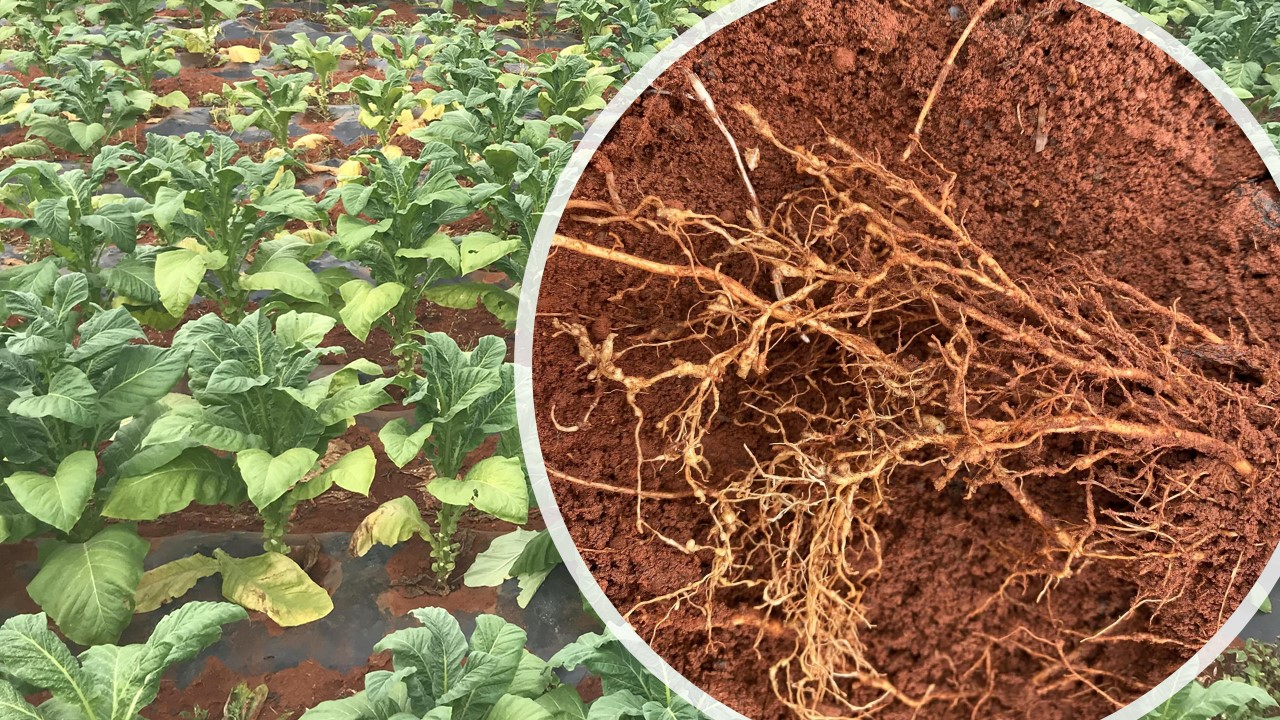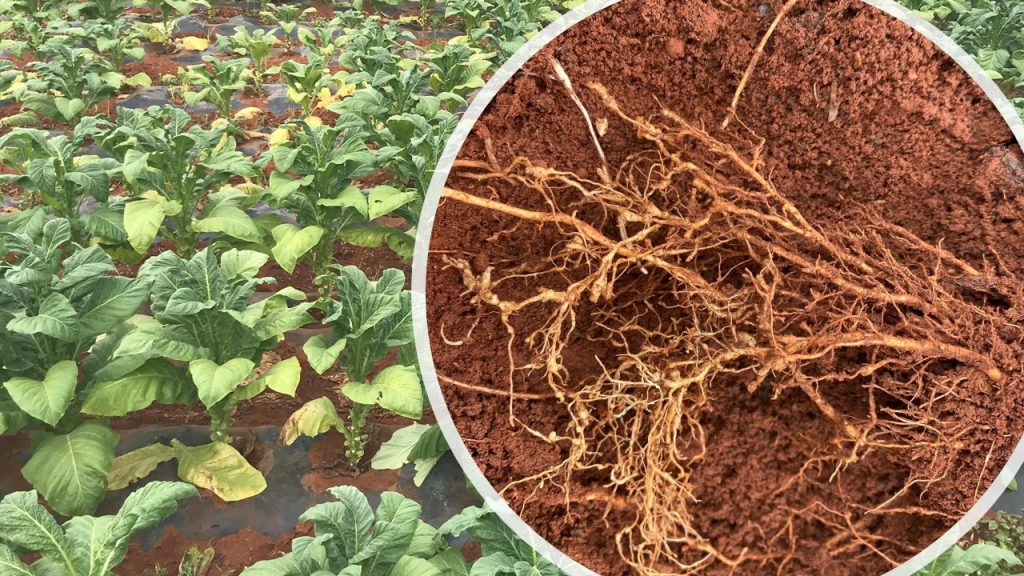Rev. Bras. Ciênc. Solo.2022;46:e0210127.
Effects of Meloidogyne incognita on the fungal community in tobacco rhizosphere
04/Mar/2022
DOI: 10.36783/18069657rbcs20210127
Graphical Abstract

Highlights
Root-knot nematode is a soil-borne disease with wide-ranging and serious damage.
Soil-borne diseases are closely related to imbalances in soil micro-ecosystems.
Fungal community composition was different between infested and uninfested soil.
Diversity and richness index of fungi showed that: infested soil < uninfested soil.
Some specific fungi may play a positive role in improving soil micro-ecosystems.
ABSTRACT
The often widespread and serious Root-Knot Nematode (RKN) disease is an important soil-borne disease affecting tobacco production. This study aimed to understand micro-ecological changes caused by RKN disease and interactions between disease and rhizosphere soil fungal communities. The 18S rRNA gene sequencing was used to study changes in rhizosphere fungal community of tobacco plants having RKN disease. In June 2018, a paired comparison was performed between rhizosphere fungal community structures of healthy tobacco plants and those with RKN disease in Yuxi and Jiuxiang, Yunnan Province, China. Compared with uninfested soil, the OTU abundance, Shannon, ACE and Chao1 indexes of infested soil in the two tobacco areas showed a decreasing trend. Principal Coordinate Analysis showed fungal communities of infested soil and uninfested soil in the two tobacco areas were clustered in different areas, and the community composition was significantly different. Moreover, the dominant fungi community and relative abundance are significantly different at phylum, genus and species levels. More beneficial fungi, such as Penicillium and Aspergillus, were found in soil samples of healthy plants, whereas more pathogenic fungi, such as Phoma and Alternaria, were found in soil samples of diseased plants. In conclusion, changes in fungal community structure and decreases in species diversity and richness were important characteristics of rhizosphere soils from diseased tobacco plants. Disequilibrium in the tobacco rhizosphere micro-ecosystem may allow the development of RKN disease and other more complex diseases.
255

